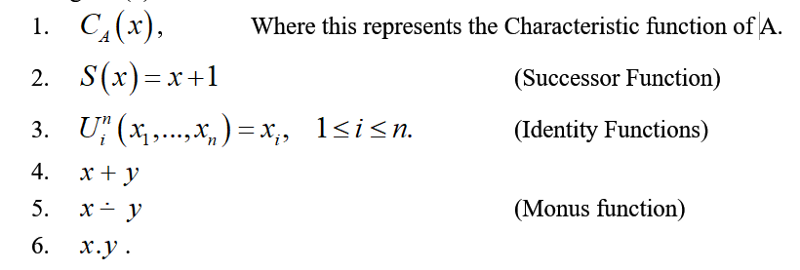The foundation of recursion comes in 6 functions. OP_ADD and OP_1ADD encapsulate point 4 and point 2 (below) respectively. Point 6 is completed using OP_MUL. It leaves us only the Monus, the Characteristic, and the Identity functions. They will be covered later.
Following Godel’s Axiom, all mathematics that is decidable (and as such, we may say, anything of any of use in science, engineering, and finance) can be solved using the following six (6) constructs.

Multiplication Function:
OP_MUL covers the x.y function at point 6.
With a b OP_MUL , a is multiplied by b.
Successor Function:
Point 2 is simple; it is covered using OP_1ADD.
The successor function acts to form the level-0 foundation of the infinite Grzegorczyk hierarchy of hyperoperations. Such allow the mathematical functions to be built. They include the addition, multiplication, exponentiation, tetration, and functions.
Addition:
OP_ADD covers Point 4.
a b OP_ADD: a is added to b.
The Monus Function
Today, I will start in earnest with a Monus function.
It calculates the cutoff subtraction. When we calculate it, we know that we will not have a negative value returned. In creating mathematical functions and a compiler, it is an extremely valuable function.


I have expanded a more detailed script than is truly needed below. It is a rather careful and detailed script, and a simpler function can be created.

The Monus function acts as follows:

More importantly, we can save other functions and call them such that they load into the Monus function.

Note how we can incorporate functions into functions.

Here, we have extended the results to calculate the Monus[S(x), S(y)] function. We can of course use any function for a comparison.
There are more efficient methods to calculate the Monus. But I shall leave them to the reader.


